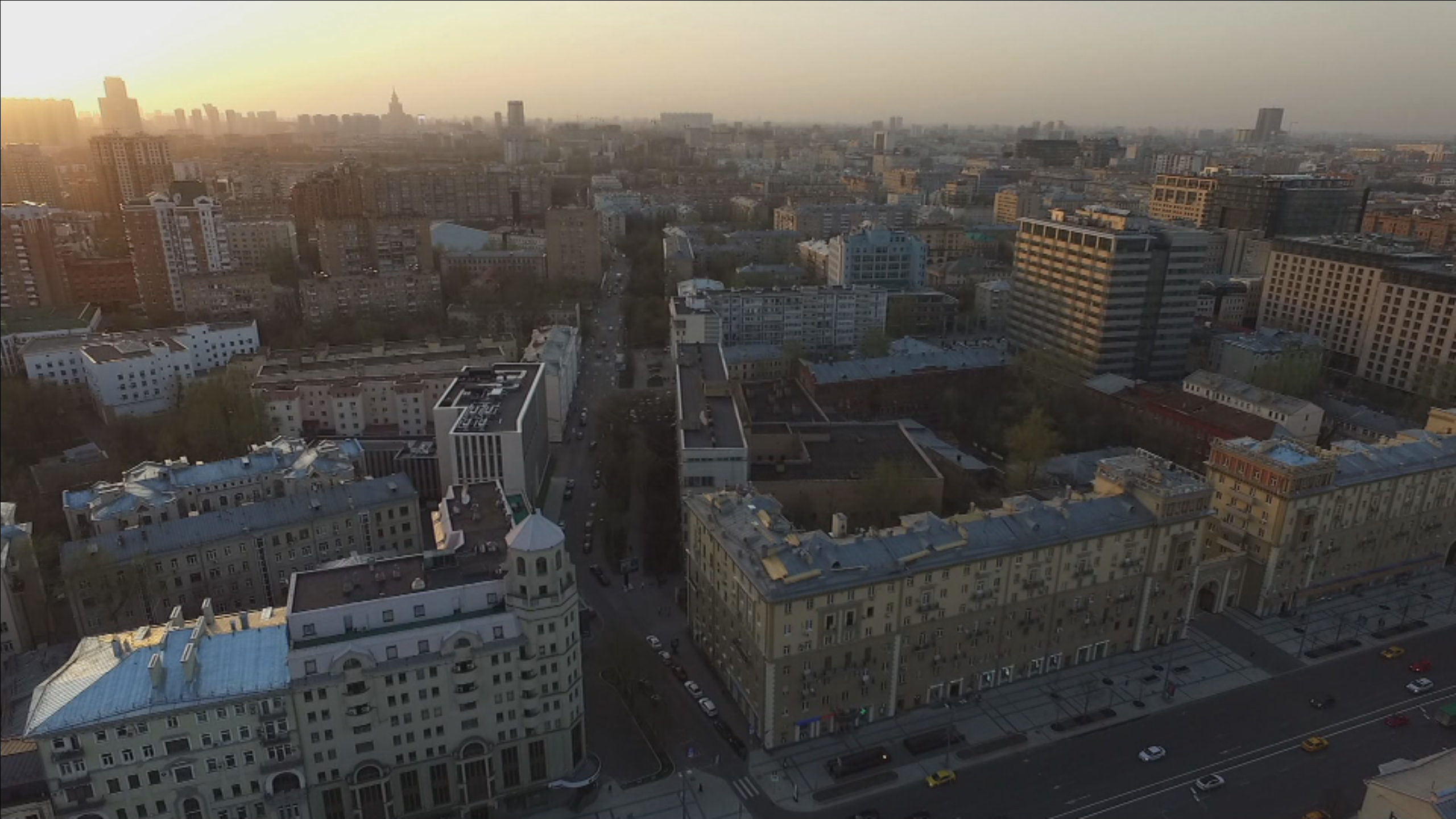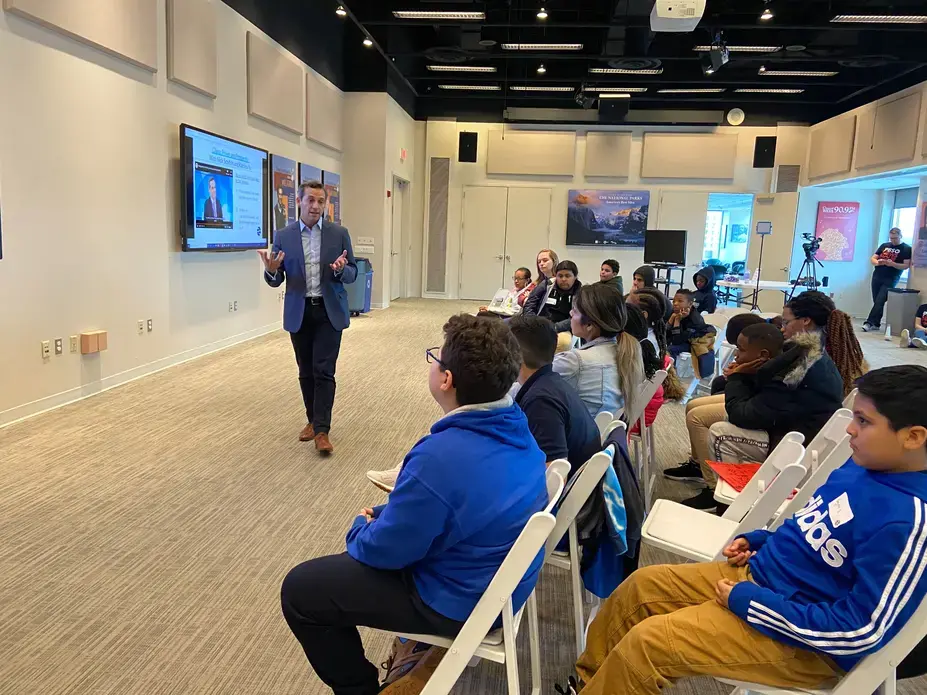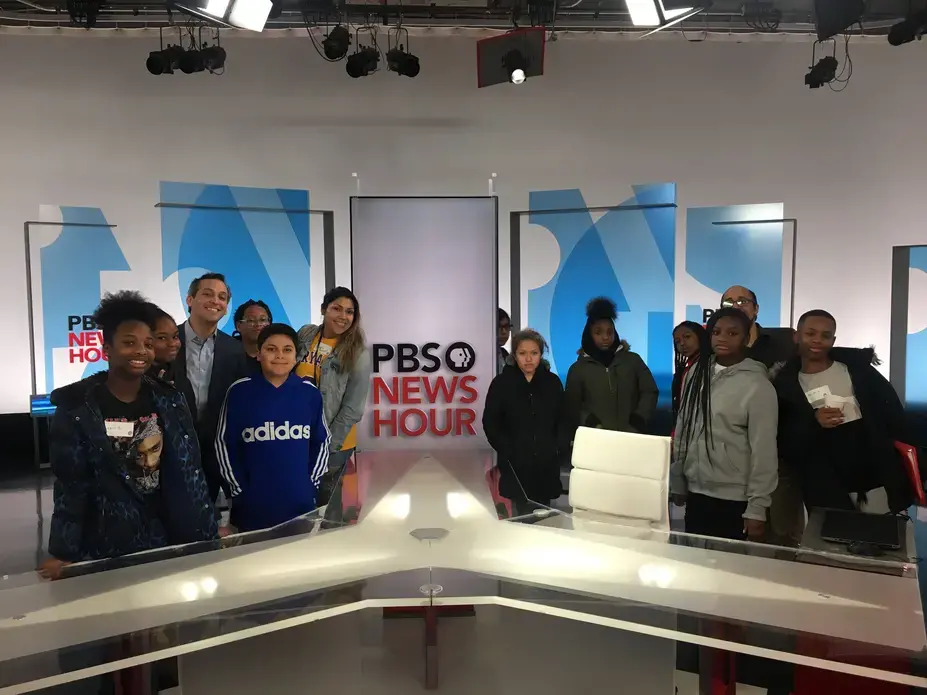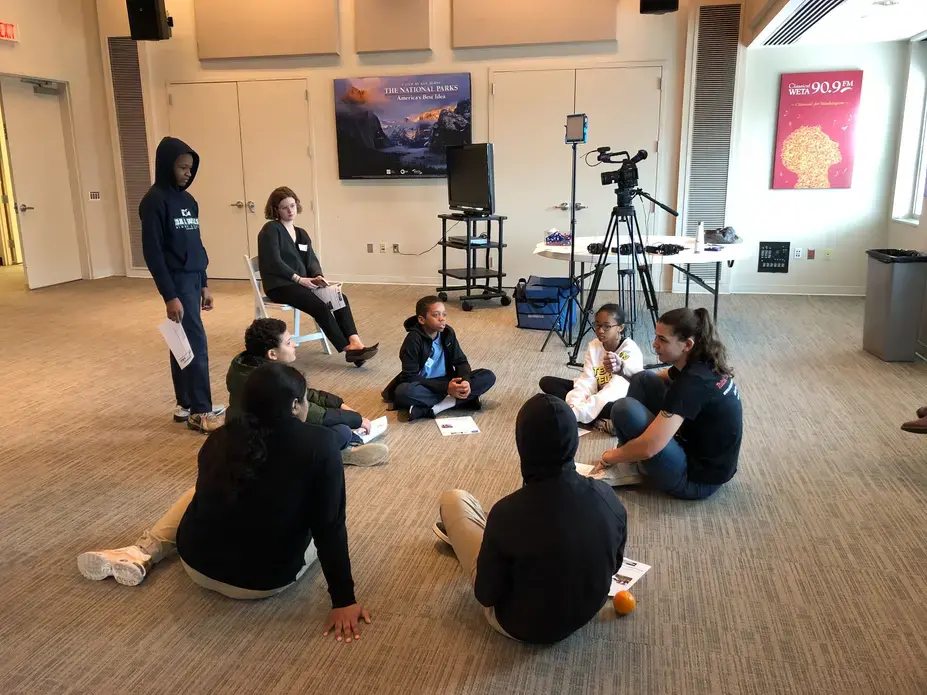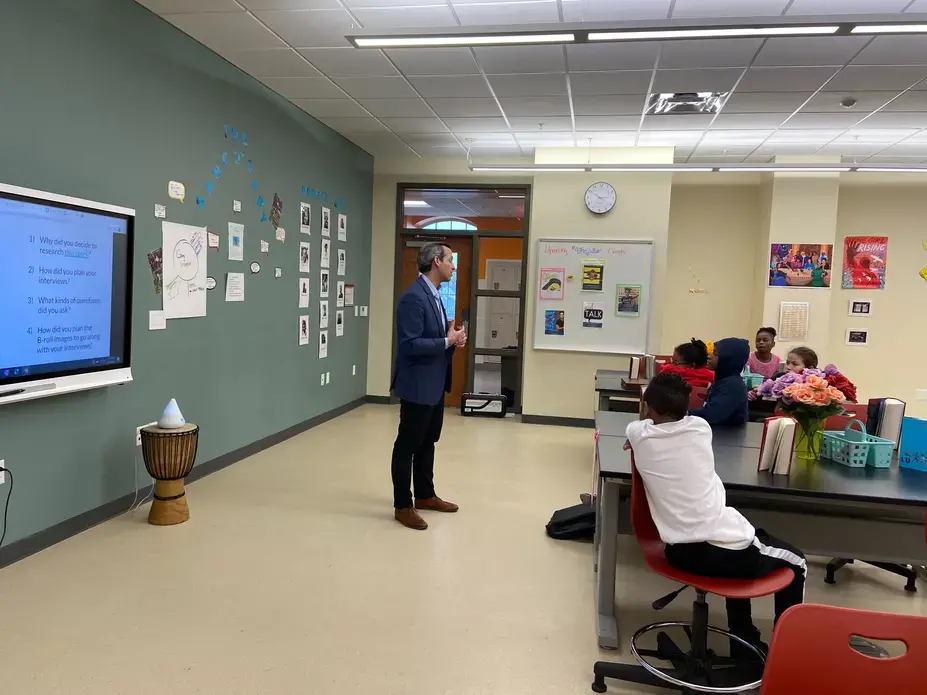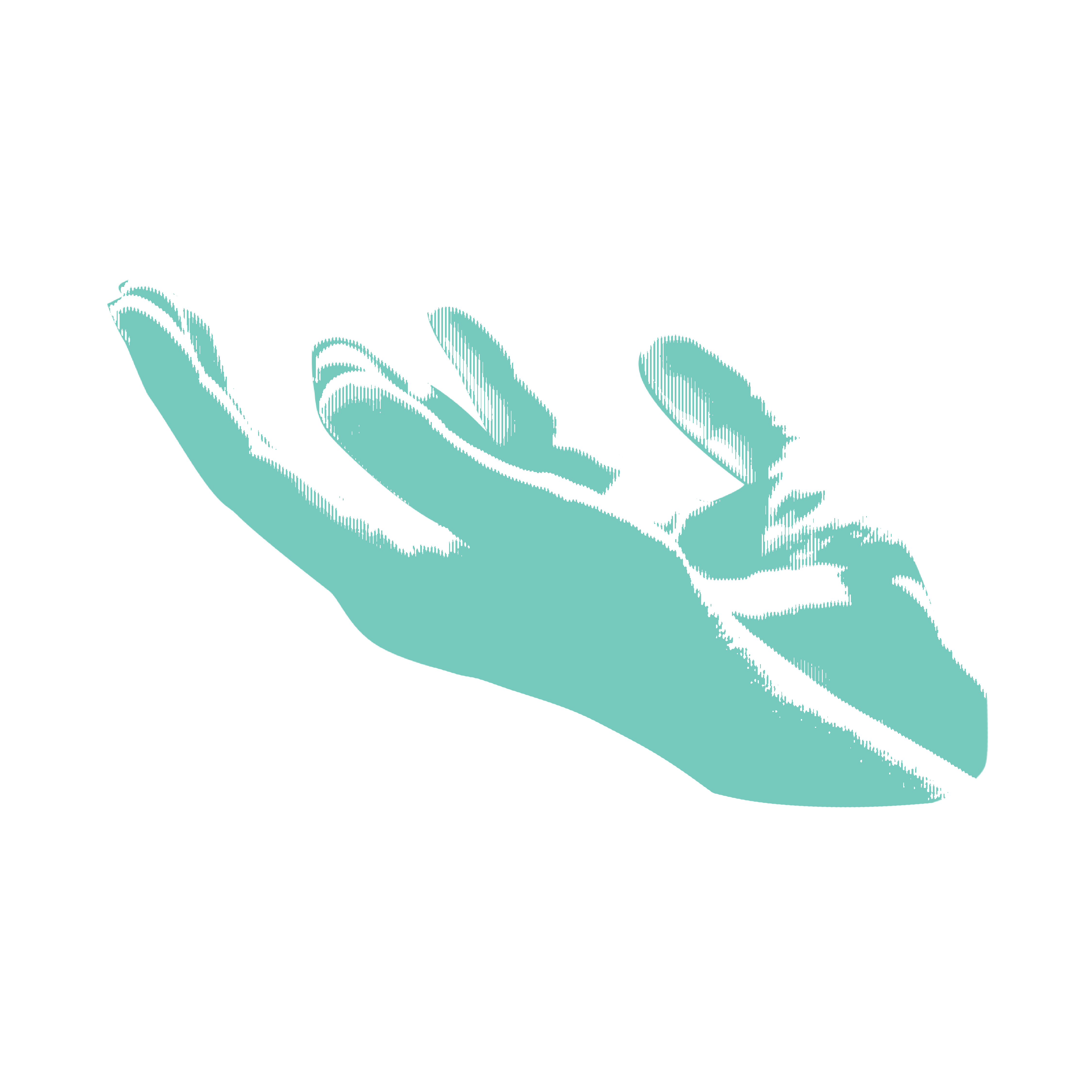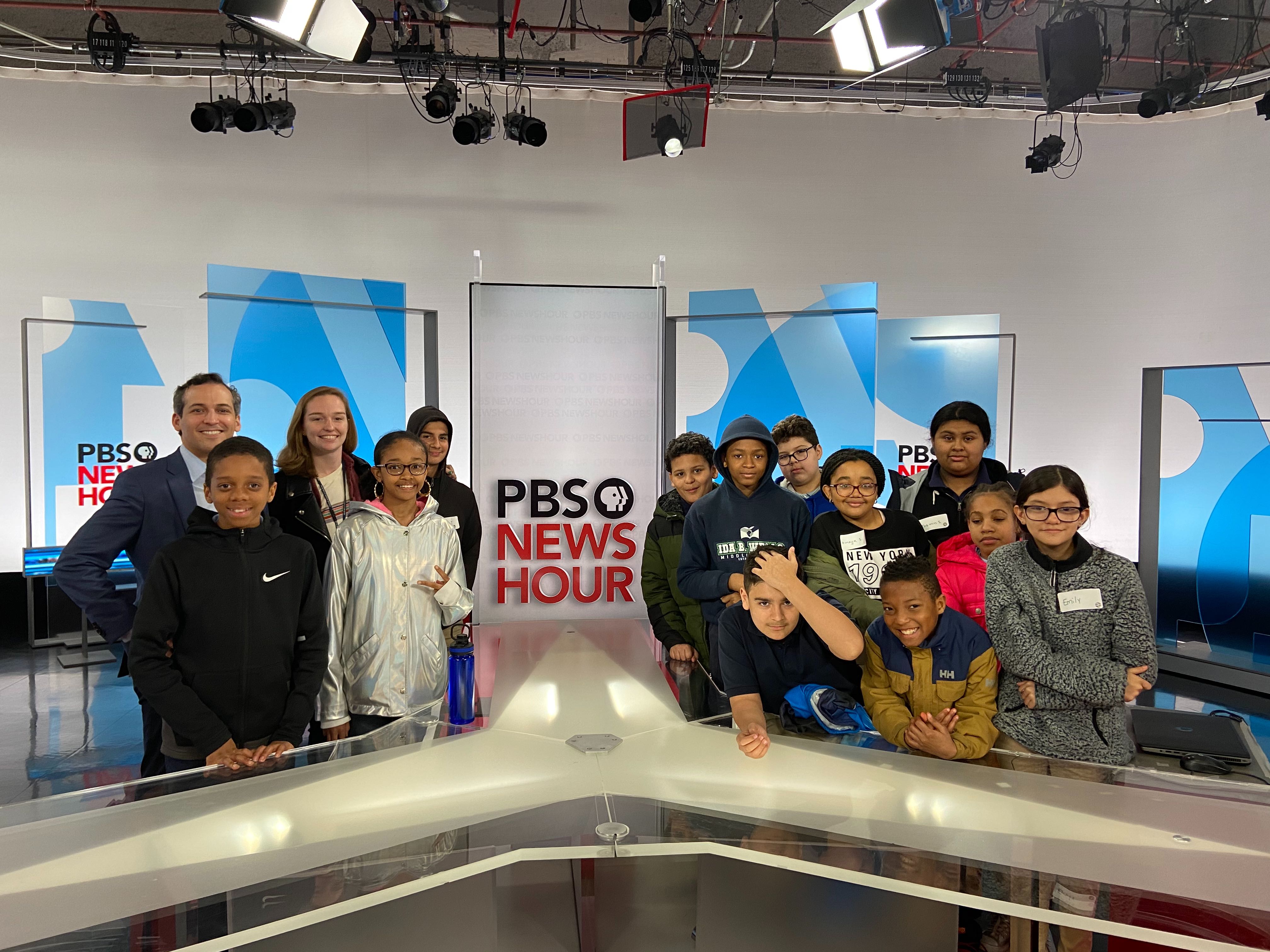
Create. Amazing. Controls. Camera. Excited.
By the end of their day spent at WETA Television Studios, home of PBS NewsHour, students from Ida B. Wells Middle School used each of those words to describe their experience touring the Newshour set and connecting with staff. With support from the Pulitzer Center, more than 20 middle schoolers participated in a workshop centered on the telling of underreported stories through live and taped broadcast segments. The workshop, which included a field trip to WETA, was supported by the D.C. Commisison on the Arts and Humanities, which receives support from the National Endowment for the Arts.
Prior to arriving to the NewsHour studios, the students participated in a pre-trip lesson in the classroom led by Senior Education Manager Fareed Mostoufi. The lesson focused on key terms that would later be applied during the hands-on workshop at WETA Studios, including "journalist," "news," "underreported story," and "outlet."
Broadcast news was a large focus of the workshop, and the middle schoolers delved into what it means to produce a taped segment compared to a live segment. They explored the difference between A-roll, which includes narration and interviews, and B-roll, which includes background footage and images.
"We hope that students leave with a better understanding of what makes a story underreported and why those stories are important," Mostoufi said.
To put the key terms and ideas into practice, the classes viewed an installment of the Pulitzer Center-supported PBS NewsHour series, "Inside Russia." Through this segment, students were introduced to special correspondent and Pulitzer Center grantee Nick Schifrin, who would later join them at the NewsHour studios.
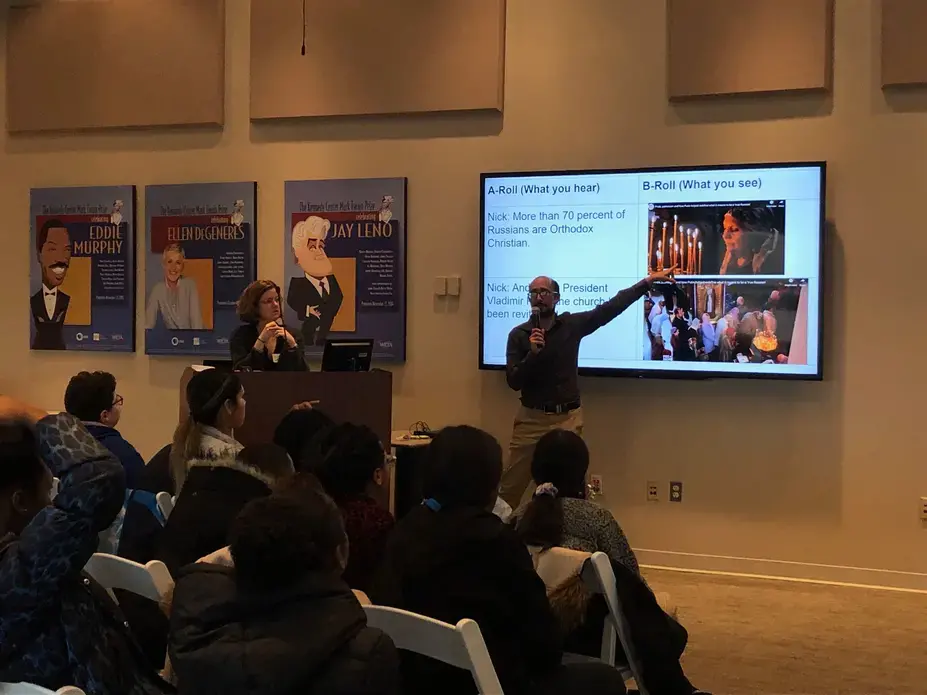
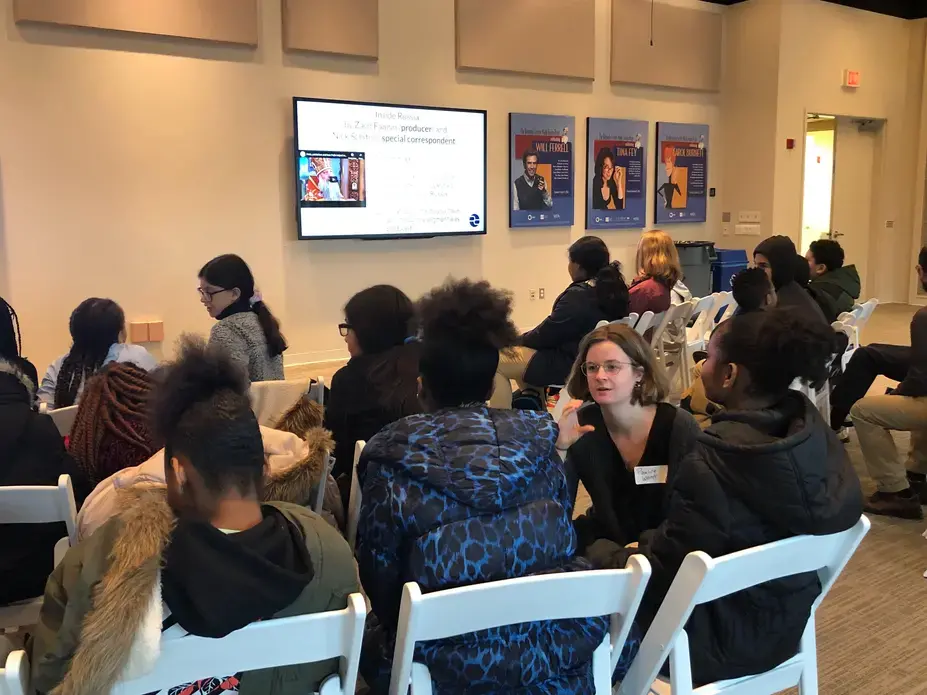
The second part of the workshop brought students to the PBS NewsHour studios to learn firsthand how a taped segment, like the one they'd viewed from "Inside Russia," is developed and created. Mostoufi, with the help of education intern Pauline Werner, welcomed the classes with a refresher course and quiz on what they'd learned during the pre-trip lesson.
Schifrin introduced himself, and students had the chance to ask him some of the questions they brainstormed during the pre-trip lesson. One student, Brian, asked Schifrin who had chosen the images that appeared in the video. Leah, another student, wondered whether or not Schifrin learned to speak Russian during his time in the country.
Always my pleasure to spend time with middle school students and talking journalism with the fabulous @reportinglabs and the always energetic Fareed Mostoufi of the absolutely vital @pulitzercenter pic.twitter.com/HMPz7maLZv
— Nick Schifrin (@nickschifrin) February 25, 2020
Also joining Schifrin and the Pulitzer Center were members of the PBS NewsHour Student Reporting Labs (SRL) team. To promote well-grounded local reporting, SRL works with students to help them find their voice and engage with their communities.
The students then divided into two groups to participate in the hands-on element of the field trip. The first rotation began with a behind-the-scenes tour of the PBS NewsHour studios.
With the help of Schifrin and other NewsHour staff, students toured the control room, where audio and video are handled, and the NewsHour set, where anchor Judy Woodruff greets audiences nightly. The tour allowed students to have an up close and personal look at the technologies that help produce live segments.
Most importantly, they had the chance to sit behind the famous NewsHour desk. "Look, I'm Judy!" said one student.
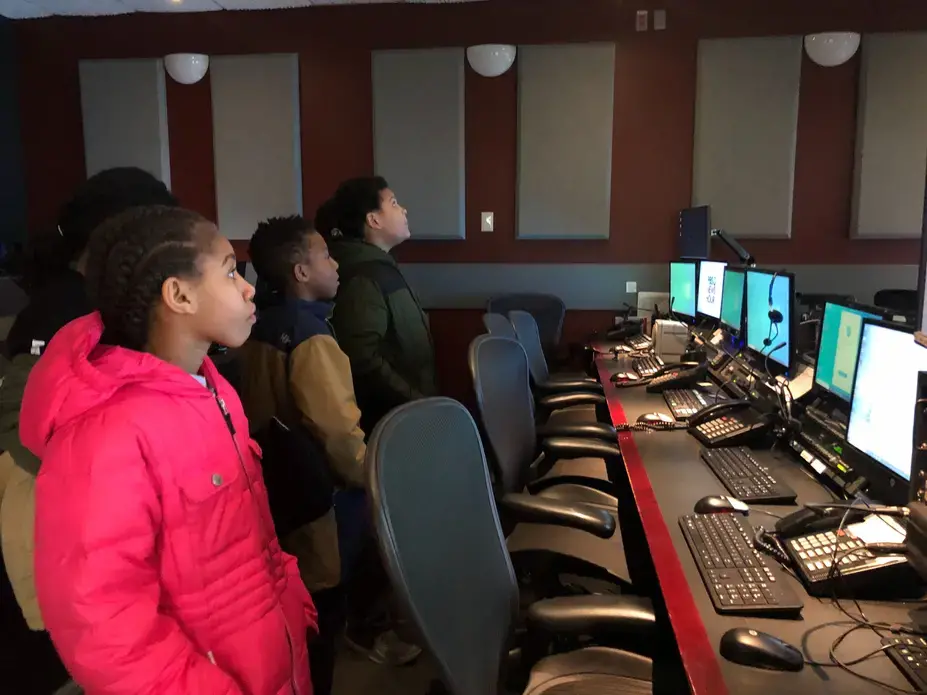
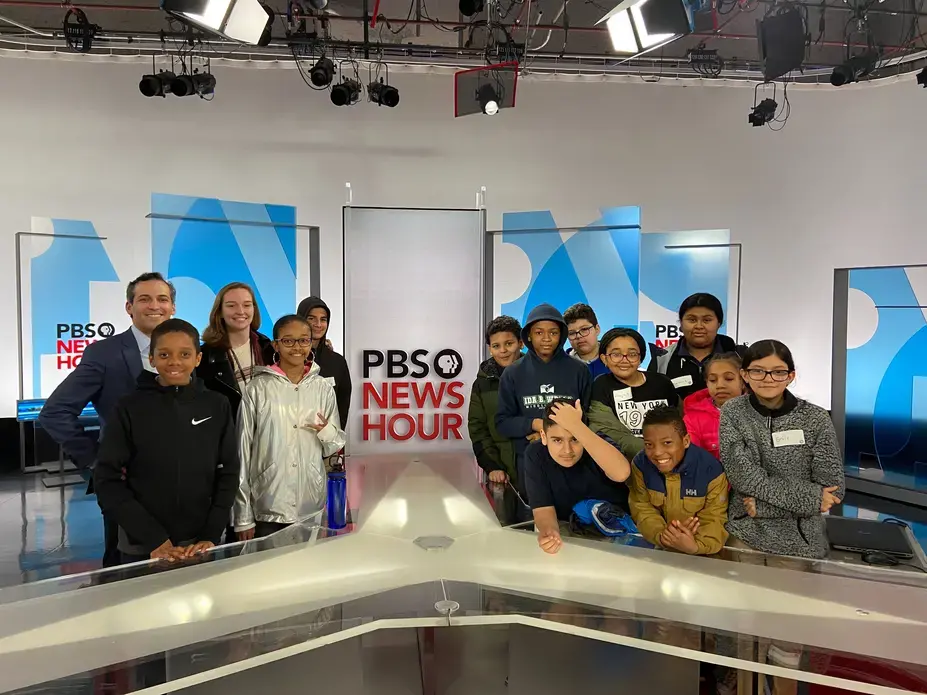
The second half of the field trip gave the students the chance to get behind the camera and produce a video themselves. With the help of Student Reporting Labs staff, they learned the five-step process of producing a video interview:
- Analyze the room
- Set up the camera
- Check the audio
- Conduct the interview
- Identify the B-roll
After choosing an interviewee, the teams of 4-5 students brainstormed questions they wanted to ask. Each student had the chance to work with the camera and listen in on the audio. Once a brief interview had been recorded, a member of the Student Reporting Labs team helped students identify angles or themes to focus on. A helpful worksheet allowed for the pairing of narration with B-roll.
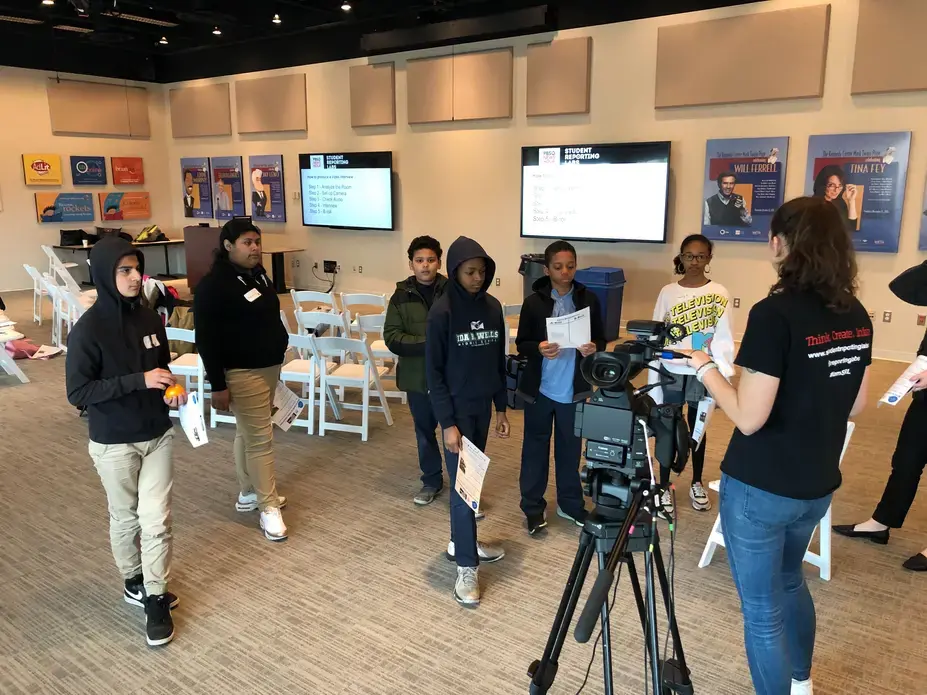
The following week, Schifrin and the Pulitzer Center staff returned to Ida B. Wells Middle School to reconnect with students. For the post-trip lesson, Schifrin's main goal was to explain and clarify as much as he could to students about his reporting process, his role as a special correspondent, and the way that he composes questions for interviews and B-roll images to accompany audio from interviews.
The classes had previously connected with speakers from Russia and were encouraged to make comparisons between what those speakers taught them and what they learned from the NewsHour segment.
Changing the focus from Russia to DC, students worked with Schifrin to brainstorm underreported stories that could be told in their communities. After identifying topics like climate change, gentrification, coronavirus, and greater homework loads, students brainstormed questions they could ask to better tell those stories.
In a culmination of the skills and terms learned during the pre-trip lesson and field trip, the students conducted their own interviews in pairs with the help of Schifrin. While asking interview questions, they identified potential visuals to be used as B-roll and themes to convey in their stories.
Although their pieces might not have aired that night on NewsHour, the Ida B. Wells Middle School students walked way with the tools and terms to develop and tell the crucial underreported stories in their communities.
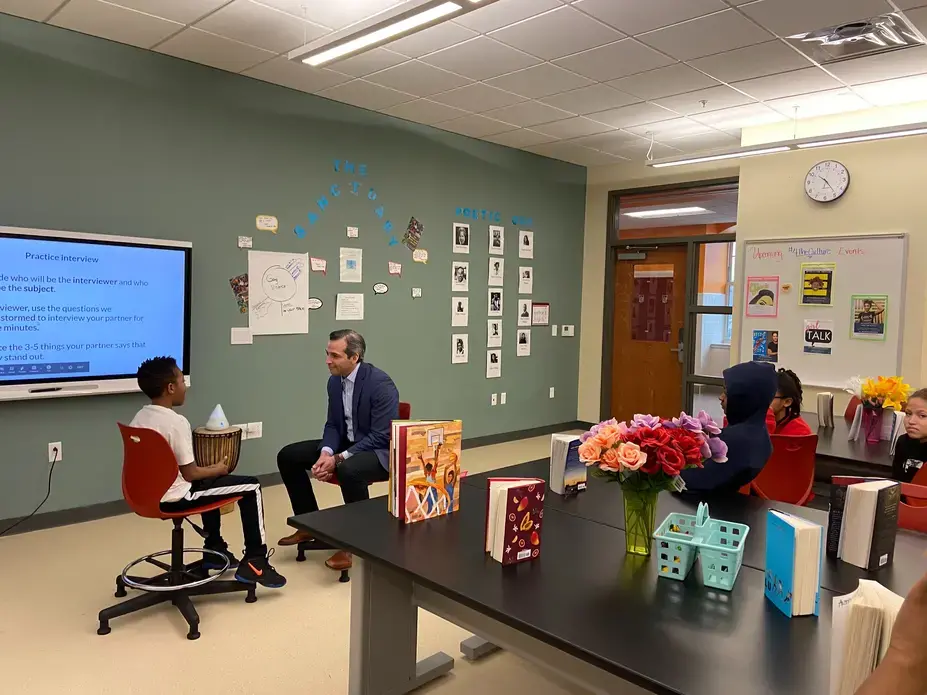
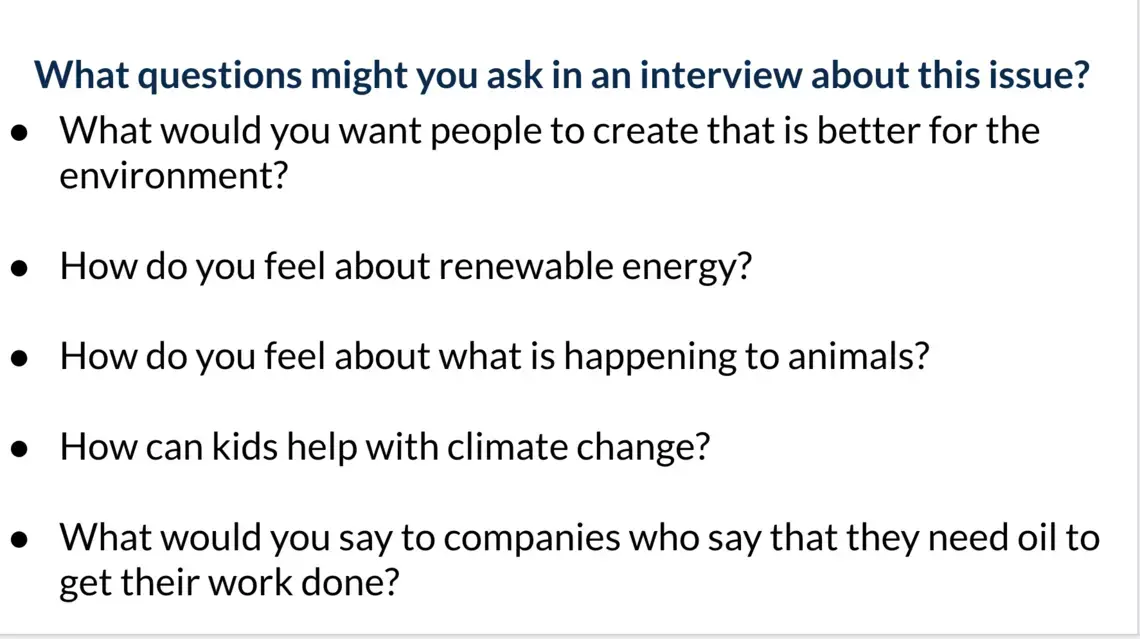
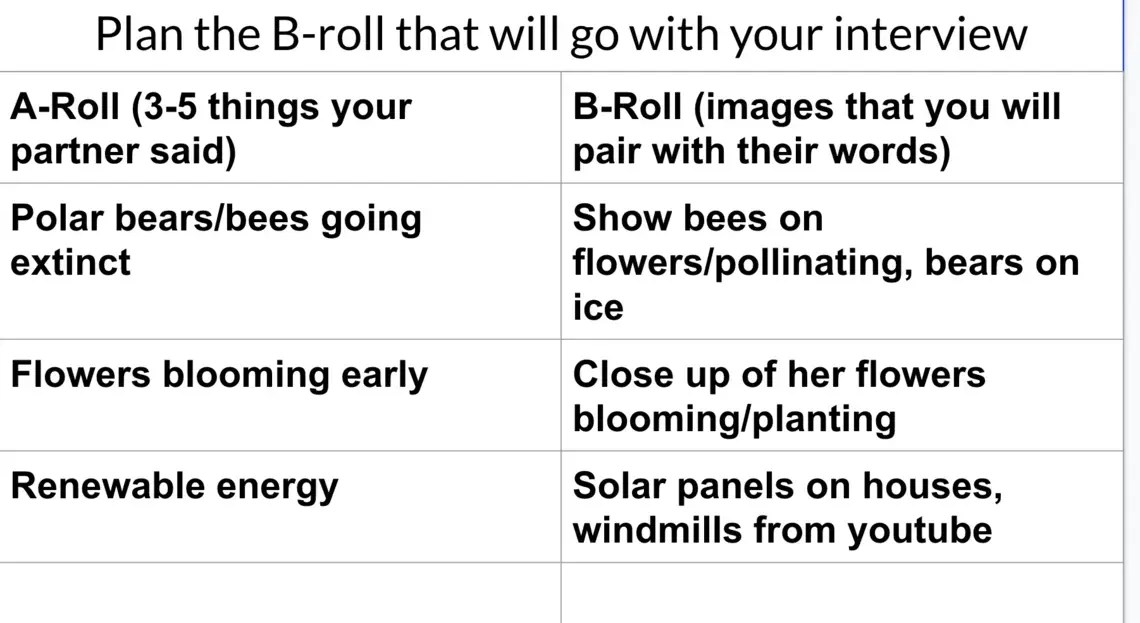
This field trip was supported by the DC Commission on the Arts and Humanities, which receives support from the National Endowment for the Arts. It was also supported by the D.C. Collaborative on Arts and Humanities Education. For more information on opportunities to connect students to underreported stories and the journalists who cover them, contact the Pulitzer Center education team at [email protected].




